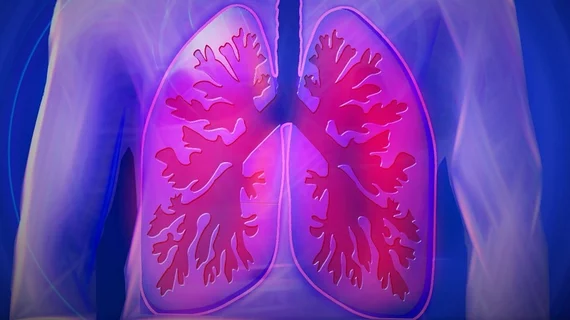MRI catches CT in head-to-head lung imaging
When it comes to assessing patients with suspected pulmonary embolism, contrast-enhanced CT pulmonary angiography has no diagnostic edge over a certain free-breathing, unenhanced MRI perfusion protocol.
The MRI type is pseudo-continuous arterial spin labeling, or “PCASL.”
The study behind the finding was conducted in Germany and posted online Feb. 21 in Radiology [1].
Corresponding author Ferdinand Seith, MD, of University Hospital Tübingen, and colleagues prospectively enrolled 97 patients to undergo PCASL MRI under free-breathing conditions within 72 hours after receiving CTPA for suspected blood clotting in the lungs.
When the researchers had two radiologists evaluate overall image quality and record their diagnostic confidence on a 1 to 5 Likert scale, the team deemed PCASL MRI and CT pulmonary angiography “interchangeable.”
Seith and colleagues based the judgment on the two compared modalities coming back with an individual equivalence index of 2.6%. The clinical significance threshold is 5%, the authors point out.
Specifically, both readers rated the PCASL MRI “excellent” for both image quality and diagnostic confidence.
Further, both readers classified 35 of 38 patients as positive for pulmonary embolism going by PCASL MRI. This spelled 92% sensitivity and 95% specificity.
In their discussion, Seith and co-authors remark that, in the study, perfusion deficits caused by pulmonary embolism were “reliably detected … even under free-breathing conditions.”
More:
PCASL MRI may have a role as a radiation- and contrast material-free alternative to CT pulmonary angiography in certain patients. Further studies will be needed to evaluate the accuracy of PCASL MRI in detecting microvascular impairments in lung perfusion.”

